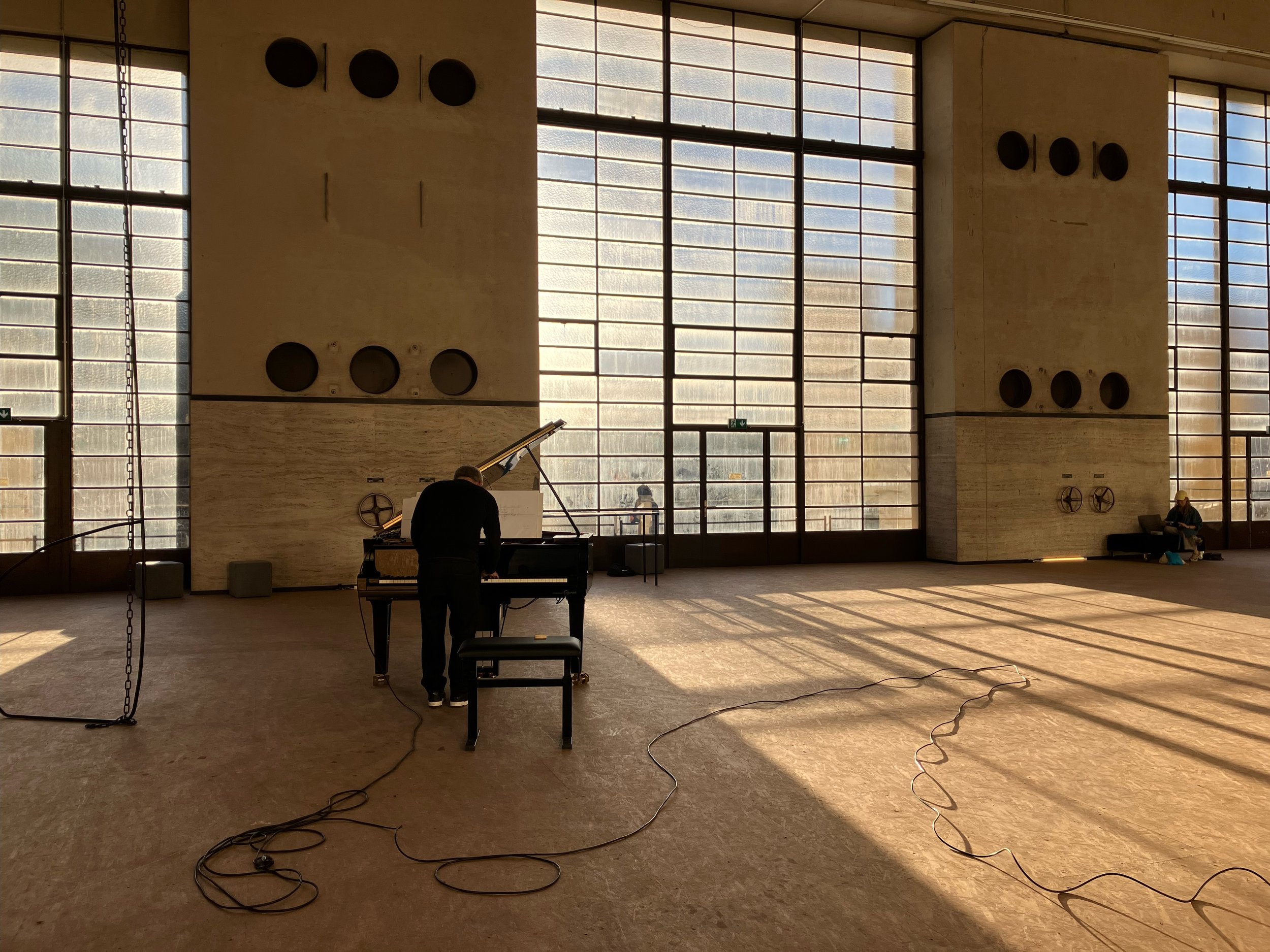Deathstar (duration), 2023
Marina Rosenfeld’s Deathstar is one of her longest ongoing works, comprising outcomes in numerous formats: sculpture, sound installation, concert performance, musical notation, drawing and recording. The Deathstar project explores the fundamental instability and contingency of situated listening and the possibility that an exhibition can also be a work of music.
In 2023, Rosenfeld created a new instantiation of the project for the central hall of Chandoline as part of the first Biennale Son, in Sion Switzerland, with pianist Marino Formenti. Rosenfeld programmed a Yamaha Disklavier (self-playing) piano with transcriptions of Formenti’s earlier performances of the work; in a 48-hour durational performance for the closing weekend of the biennial, Rosenfeld and Formenti orchestrated a continuous sonic event over two days and nights, with audience members sleeping on site on cushions, eating and drinking (soup, schnapps, selections from a “Silent Bar”), and coming and going until just after noon on Saturday October 28, 2023. A steel sculpture Notation acted as a focal point in the movements of piano and audience around the vast site, and extended the vertical reach of the work high overhead to join with a component of the building’s physical infrastructure. The instrument periodically played itself while Formenti rested or further manipulated its sequences in waves of sometimes extreme noise, reproducing the work’s uncanny morphological and temporal distortions across the mechanics of the hybrid piano and its software.
The 2017 Deathstar exhibition featured a microphone array made to listen to and continuously recirculate sounds and their distortions in a recursive system: in a parallel gesture, Rosenfeld periodically transcribed the installation's thickly amplified silences and momentary eruptions of noise and vocality using traditional musical notation as well as an invented graphic format where verticality pointed toward spectral fields of noise and distortion at varying degrees of distance from the piano’s ‘middle C'. The score that resulted offers the performer a great deal of freedom: to select, repeat, re-order and transpose its pages. The Deathstar score continues to be a transcription many times over of the ongoing series of sonic and locational displacements of Deathstar’s singular set of recorded sounds, initiated in 2017 as a solo exhibition at Portikus, Frankfurt (see Deathstar, 2017). Marino Formenti’s first performances of the work were in 2017 as well: as a closing event of the Portikus exhibition, and later that year, as a soloist with Ensemble MusikFabrik (Cologne), in Deathstar Orchestration, Rosenfeld’s (literal) “orchestration” or instrumentalization of the Deathstar’s continuously morphing vocabulary of sound events and their distortions. Later instantiations of the work were a Reduction for chamber ensemble, and the eventual transformation of the works’ score as a durational solo performance, always by Formenti.







